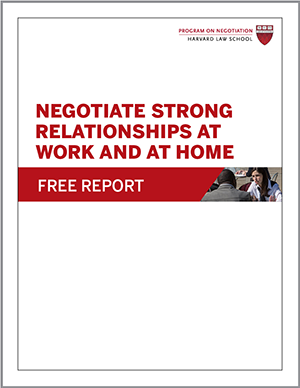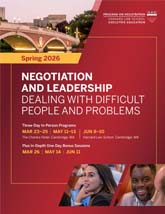Principled negotiation enables you to use shared principles and mutual understanding to achieve a successful outcome. Through integrative negotiation—focusing on underlying interests rather than fixed positions—parties can often find agreements that benefit everyone. By identifying areas where preferences differ and making thoughtful tradeoffs, both sides can come away satisfied. For example, if you care more about which movie to see and your friend cares more about where to eat, you can each prioritize what matters most to you and both enjoy the evening.
But what if you have strong opposing opinions on an issue? Let’s say you’re anxious to see a particular film, but your friend heard from a colleague that it’s not very good. How might you resolve this dilemma? You might simply argue until one party backs down or walks away—that is, you might engage in positional negotiation.
Better yet, you might agree to get a better sampling of opinions by visiting a movie review site, like Rotten Tomatoes, to find out how popular the film is with critics and the public, or look for a review of the film in a publication you both trust. Seeking out evidence that would give you both more information on which to base your decision can be a smart move. If you both trust your chosen information source, you will be more likely to agree on how to proceed.
Our relatively trivial movie example makes a broader point: When negotiators disagree about an issue, consulting objective criteria can be a lot more productive than adversarial bargaining. In their seminal book on negotiation, Getting to Yes: Negotiating Agreement Without Giving In, Roger Fisher, William, Ury, and Bruce Patton refer to this approach as principled negotiation because it involves drawing on principles rather than making opinion-based arguments.
“The more you bring standards of fairness, efficiency, or scientific merit to bear on you particular problem, the more likely you are to produce a final package that is wise and fair,” write the authors of Getting to Yes.
What Standards Should You Use?
Often in a given dispute, multiple principles and criteria will be available for you to consult. Here are a few of the types of principles you could base your agreement on, according to Fisher, Ury, and Patton:
- Market value
- Precedent
- Scientific evidence
- Professional, industry, or ethical standards
- Standard form contracts
- Cost estimates
- Legal rulings
- Tradition
Putting Principled Negotiation into Practice
How does principled negotiation work in business and personal disputes? Imagine that you and your next-door neighbor have agreed to split the cost of having a new fence installed on your property line. However, the neighbor says that the fence needs to be installed one foot closer to your property because the current fence is in the wrong place. You could disagree, but that won’t get you very far. A more productive course would be to get a copy of the plat of survey for both your properties and find out the official property line is drawn.
When you’re negotiating with objective criteria, the Getting to Yes authors suggest the following three guidelines:
- Frame each issue as a joint search for objective criteria. Remember that despite your conflicting interests, you have a shared goal to determine a fair outcome. Look for shared principles that both sides find compelling. Be sure to choose criteria that are not influenced by, or biased toward, one party or the other. For example, if you need a legal opinion, seek out a lawyer who has no past association with either party or clear bias toward one party’s perspective.
- Be reasonable about which standards are most appropriate and how to apply them. When you and the other side are presenting possible criteria, keep an open mind. If each party advocates for a different standard, look for an objective basis on which to choose which is more appropriate, such as which is more widely used. Alternately, you might be able to reach a compromise between the outcomes suggested by your two different standards. Finally, you might ask a neutral third party to choose a standard for you.
- Yield to principle, not pressure. “Pressure can take many forms: a bribe, a threat, a manipulative appeal to trust, or a simple refusal to budget,” write Fisher, Ury, and Patton. Such power tactics in negotiation can be hard to resist. If the other party is pressuring you to accept a standard that you view to be illegitimate, and if he or she refuses to listen to reason, don’t give in; instead, walk away.
When you discuss your area of disagreement through the lens of independent standards, you sidestep the common temptation to defend your own position and tear down the other party’s. In the process, you increase your odds of coming together—both in the short term and during the life of any agreement you reach.
What forms of objective criteria do you use in principled negotiation in your field?





Vive-se em certo mundo que envelhece. COVISA ?
Rev. http://bit.do/dwAzi
A very good article with relevant points summarised ….
Great article, straight to the point !